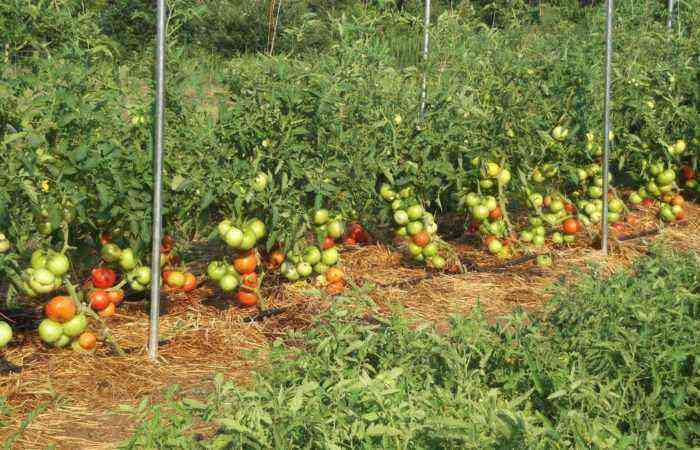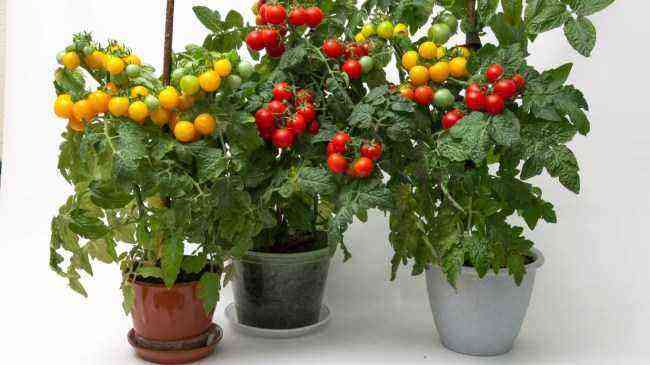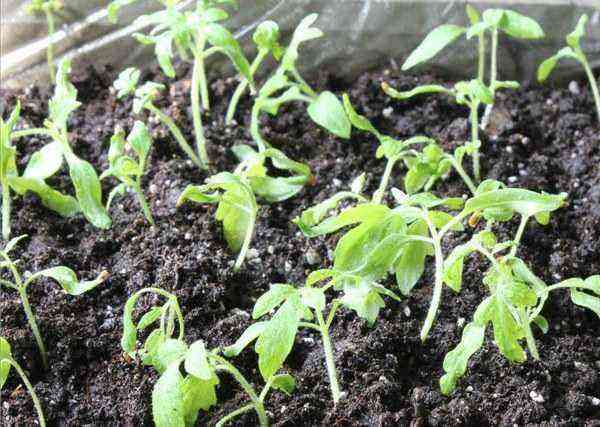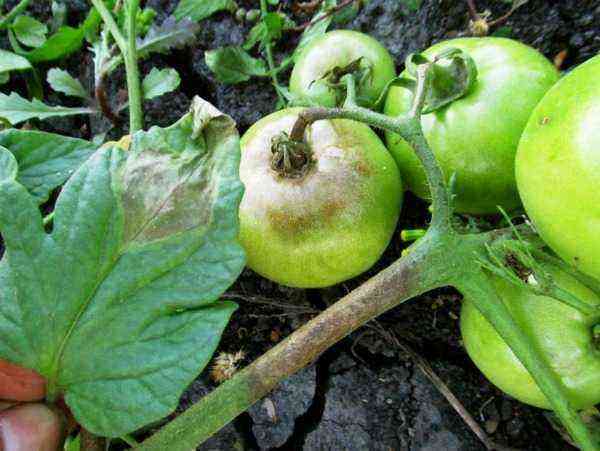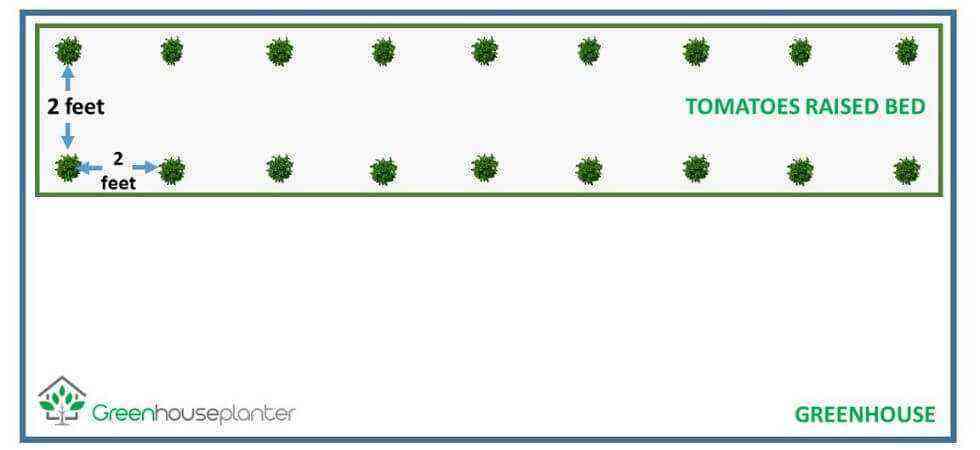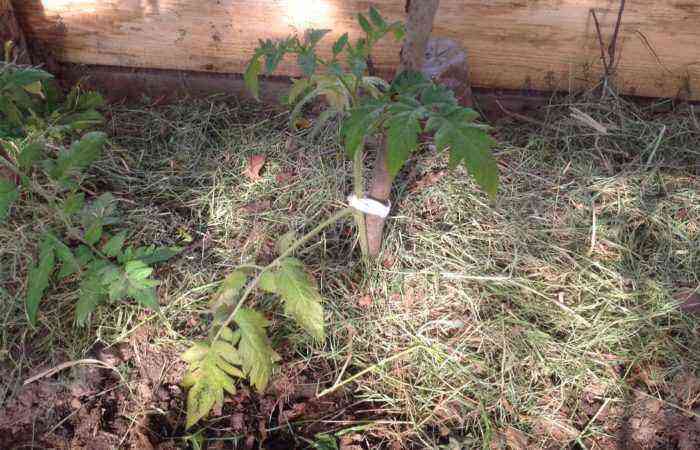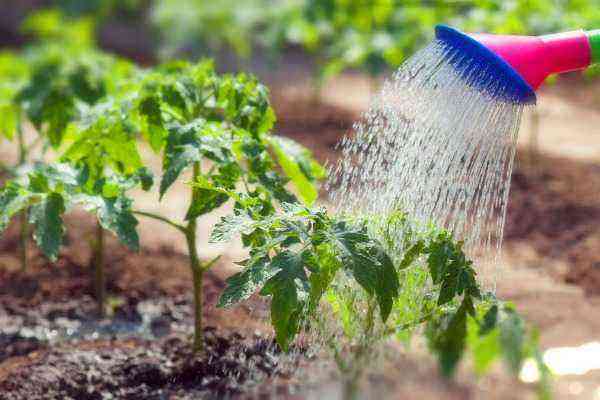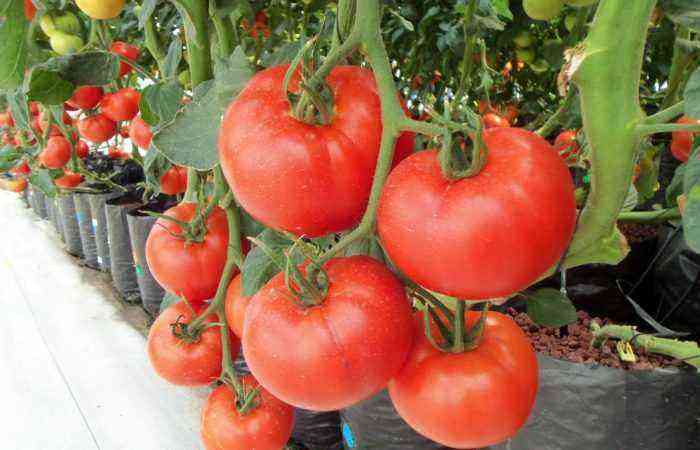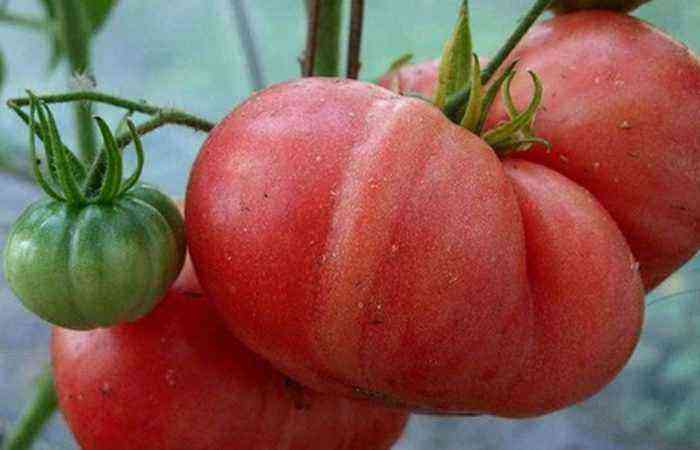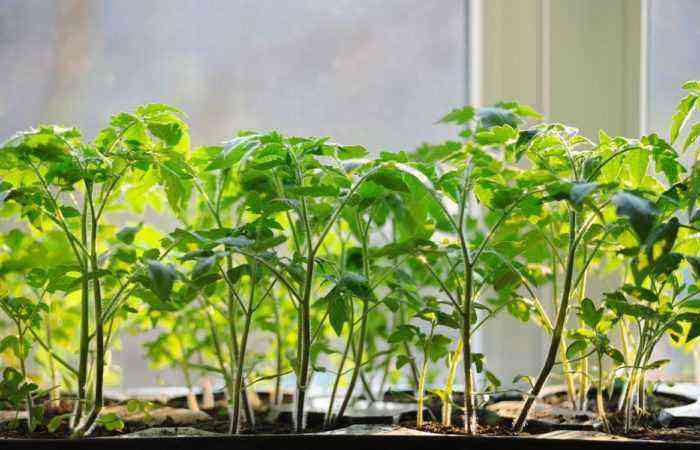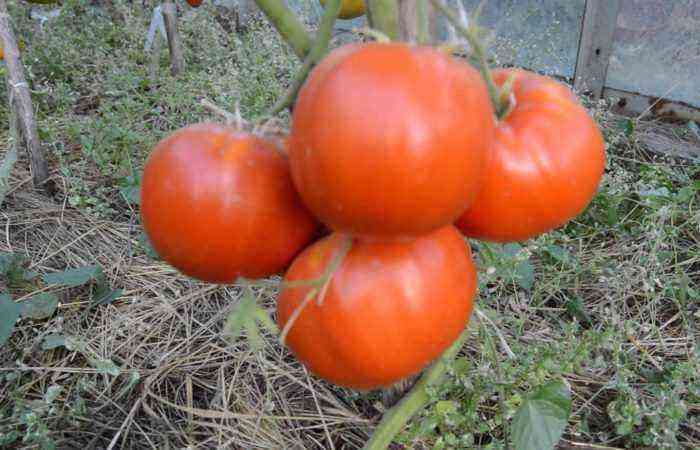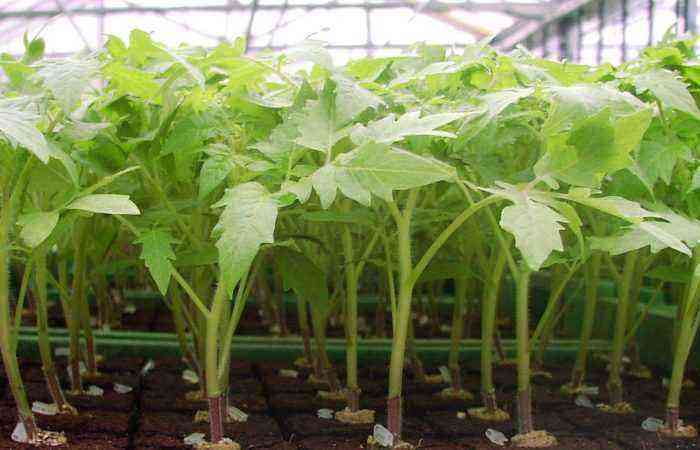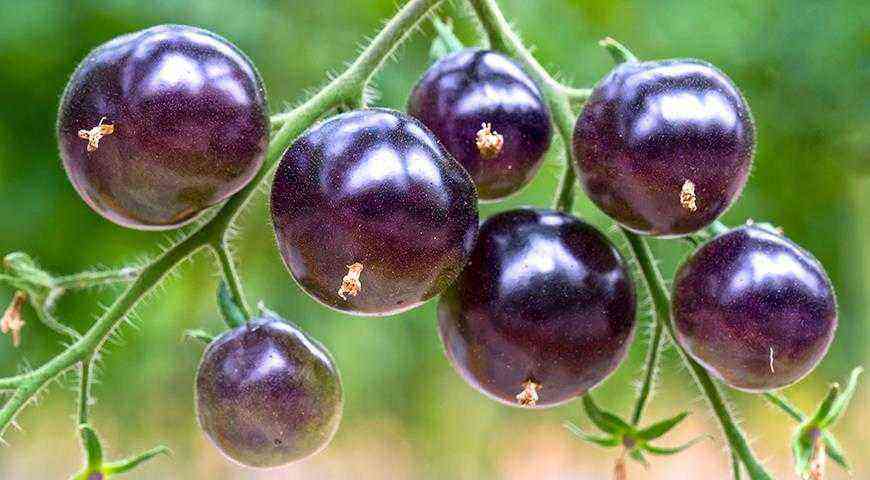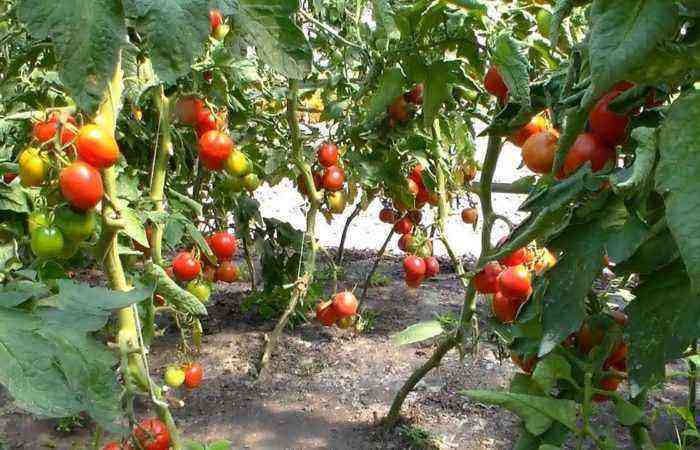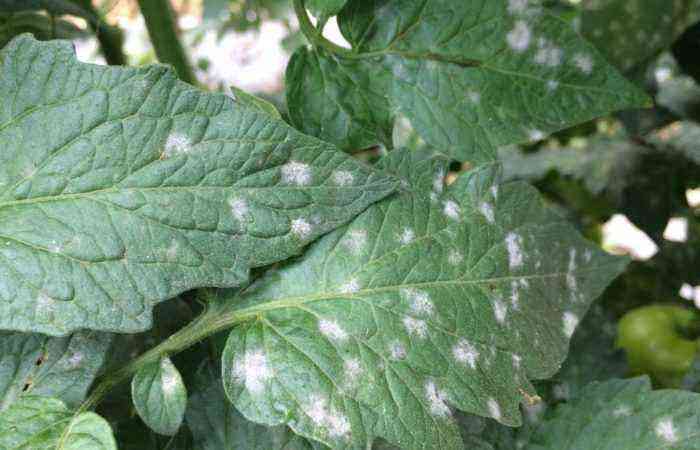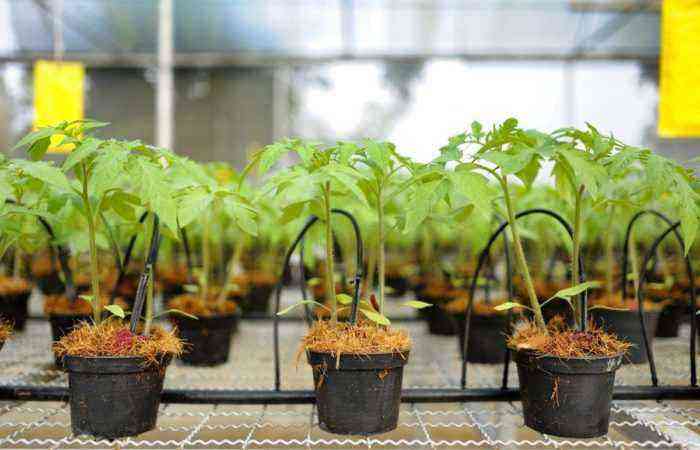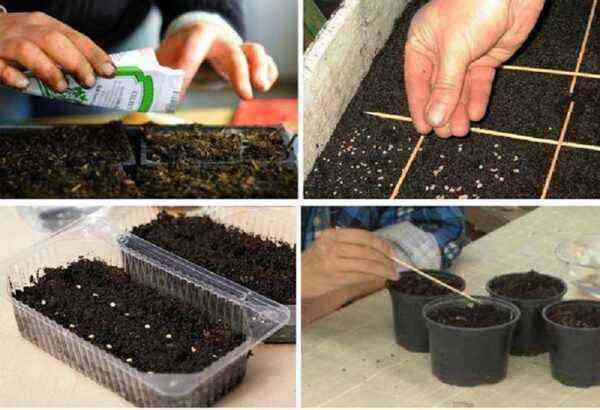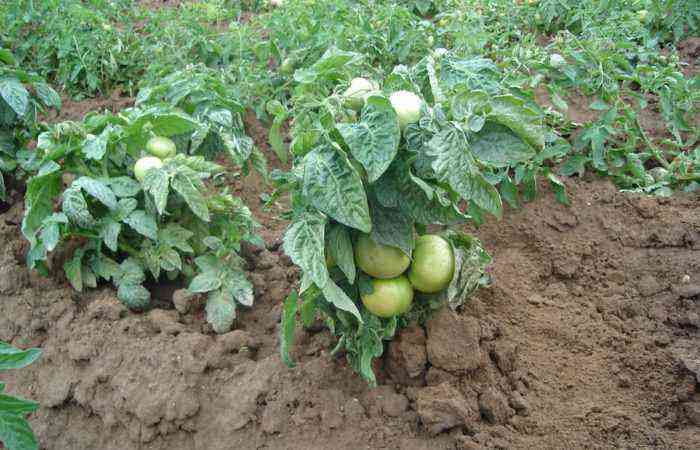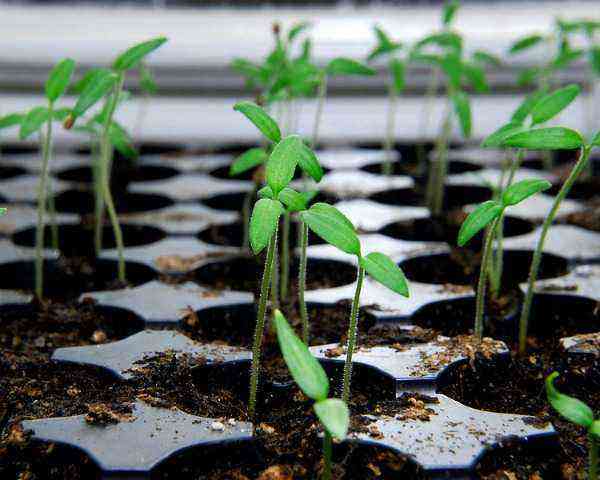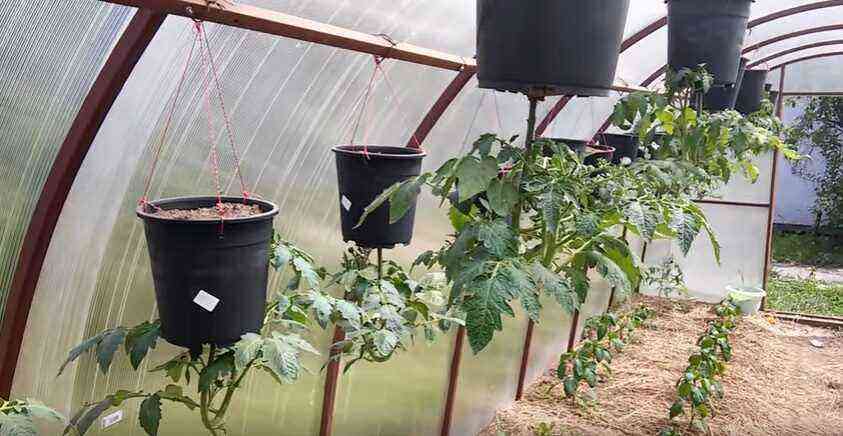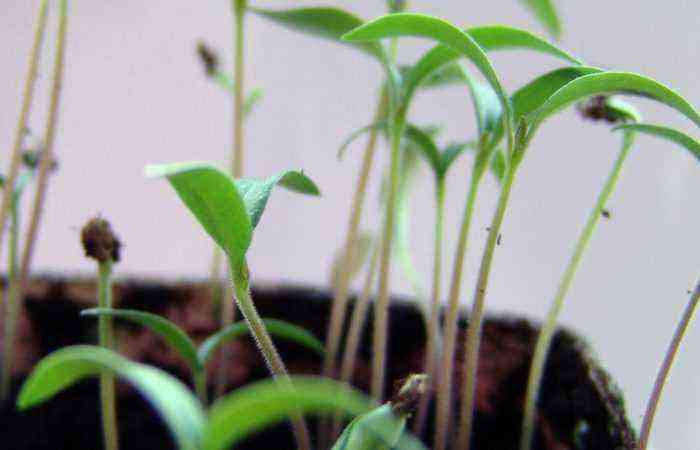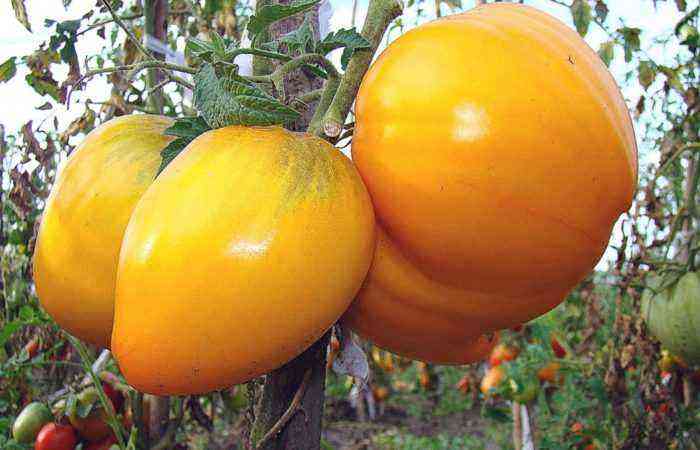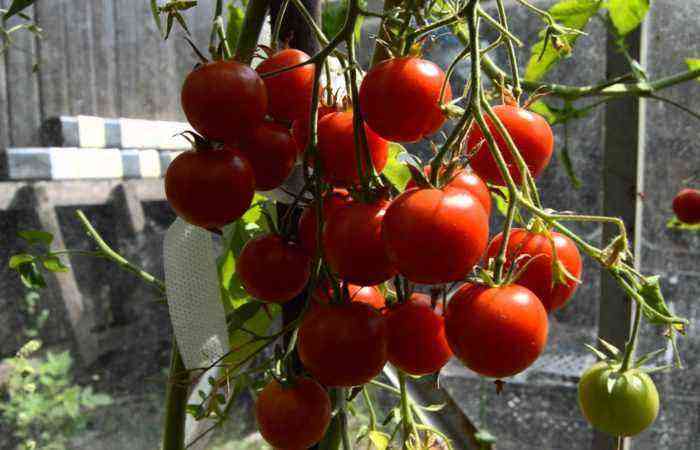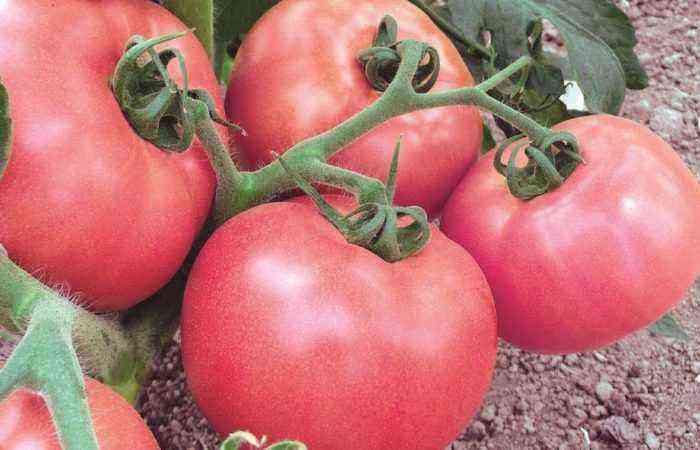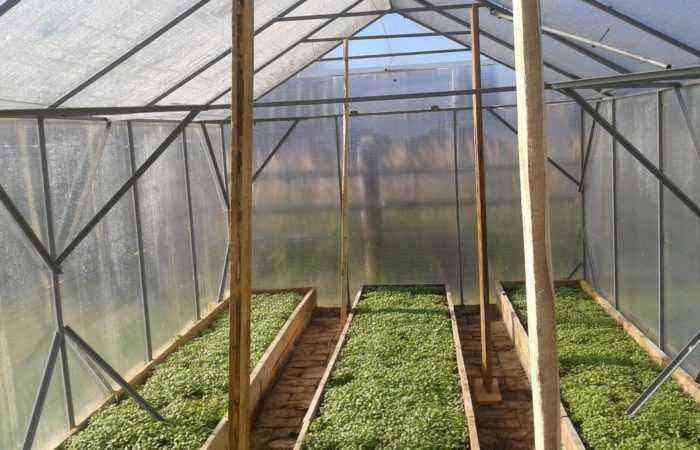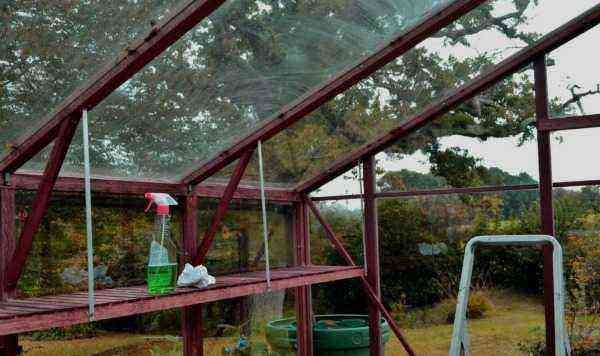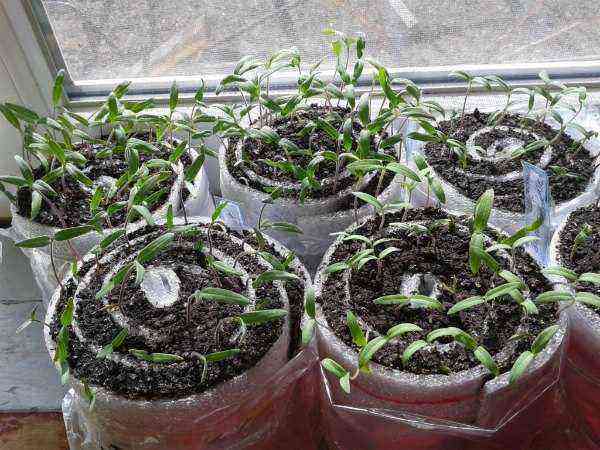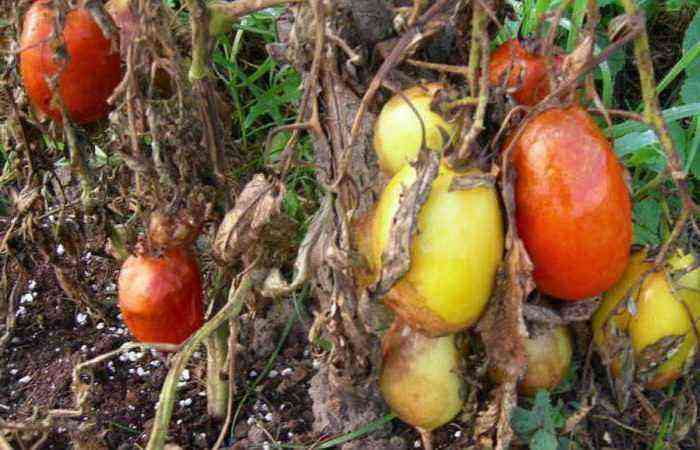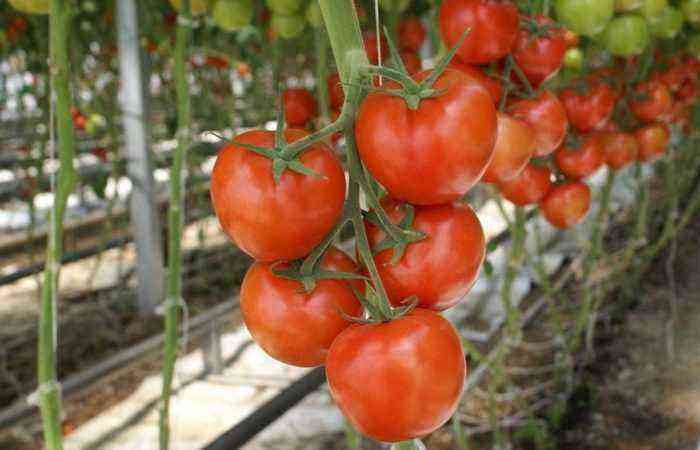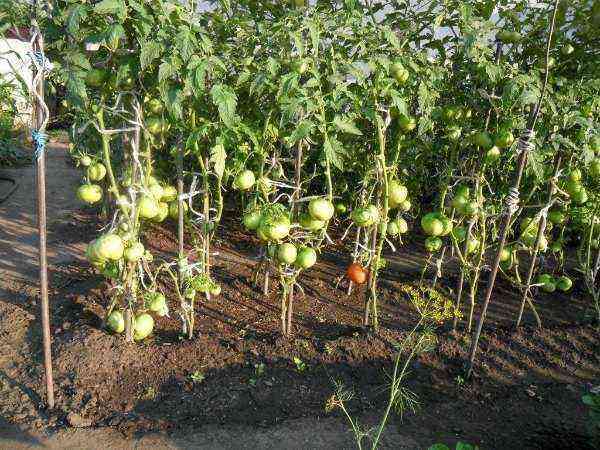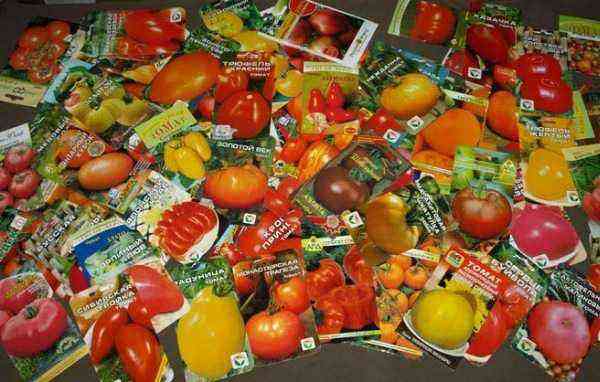Proper selection of seeds is very important to obtain a stable annual harvest. There are many requirements for varieties. They must be super-early or early, well tolerate changes in climatic conditions, and be resistant to various diseases.
According to the totality of the main parameters, the tomato “Volgograd early ripening 323” is ideal. The variety belongs to early ripening species, the first harvest of fruits begins 90-100 days after planting the seeds. Disease resistance and unpretentiousness in care favorably distinguish it from other tomatoes.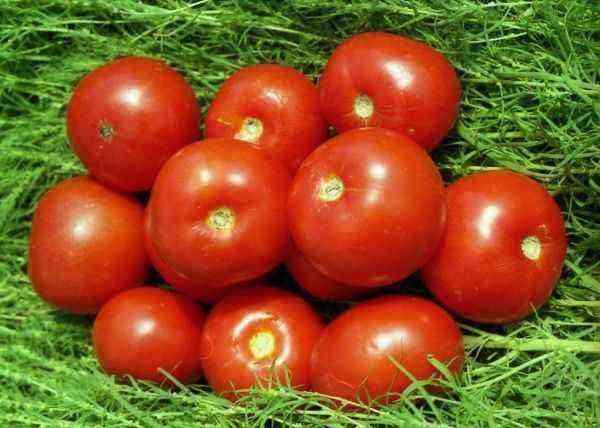
Main parameters and description
Tomato “Volgogradsky 323” was entered into the State Register in 1973 in the Central Black Earth and Nizhnevolzhsky regions for cultivation in open ground.
According to the originator’s description:
- this variety has a thick and strong stem, many leaves grow on it;
- height is 30-40 cm;
- the variety is determinant, no need to pinch the top to stop growth, the bushes do not require the removal of stepsons and garters;
- the root system develops in the upper layer, without deepening into the soil;
- the leaves are light green in color, slightly wrinkled, without edging;
- inflorescences are formed above 5-6 leaves, then they can be through a leaf or even without gaps, inflorescences of a simple form, 5-6 fruits are formed on each.
The grade assumes cultivation in an open ground. If greenhouse cultivation is possible, it is also allowed to plant the tomato “Volgograd early ripening 323”.
The mass of ripe fruits is within 80-100 gr. They are bright red in color with a slightly yellowish tint. The skin is thick and even. Tomatoes are fleshy and juicy. They have a pleasant taste.
The yield from one bush reaches 7 kg / m². Tomatoes have good keeping quality and are not demanding for transportation.
Variety “Volgogradsky 323” belongs to the early ones, like other varieties of the Volgogradsky variety (Volgogradsky 5/95, Volgograd pink, Red Krasno, Lady’s fingers).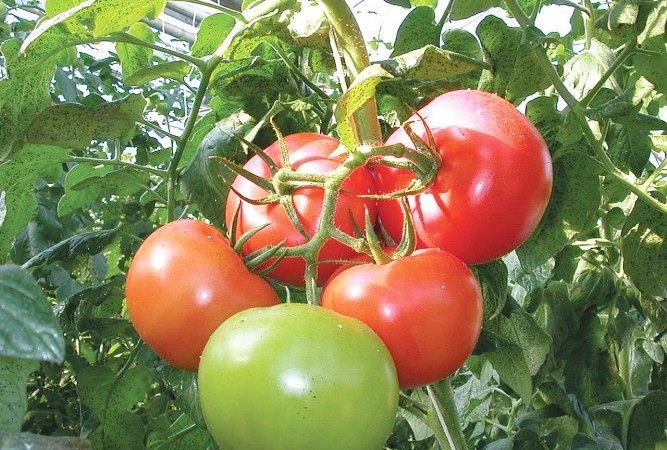
Advantages and disadvantages of tomato “Volgograd early 323”
When cultivating the tomato “Volgograd early ripening 323”, a number of advantages of the variety are noted:
- fast formation time and uniform ripening of fruits;
- almost the same size of mature tomatoes;
- excellent taste and aroma, ideal for salads and preservation;
- harvesting before the mass appearance of late blight;
- does not require pasynkovanie and the formation of a bush;
- ability to resist diseases of top and root rot;
- unpretentiousness in care;
- the ability to withstand temperature fluctuations and rainy weather without yield loss.
No significant deficiencies were found in this variety.
Agrotechnics of cultivation
Tomatoes of the Volgograd variety can grow on any soil, but they prefer sandy and sandy loam. With a close occurrence of clay, high beds can be made. Cucumbers, zucchini, cabbage, carrots, and beans are considered good predecessors for planting.
A plot for tomatoes is best prepared in the fall. Apply organic fertilizers to the soil, adding a little mineral, carefully dig. In the spring, harrow the ridge and fertilize with ammonium nitrate.
Important! Tomato Volgograd is suitable for both open ground and greenhouses.
Sowing seeds for seedlings is carried out in March. Seeding features:
- Seed preparation. Soak well in salt water (at the rate of 1 tablespoon of salt per glass). Damaged and poor quality will float, they must be thrown away. We disinfect strong seed material in a solution of potassium permanganate (1 g per 1 liter of water) for about 30 minutes.
- Priming. You can buy a special ready-made or make your own. To do this, add humus and peat to the sand.
- Container. We use plastic (thoroughly washed and disinfected) or peat pots, so as not to subsequently pick and injure the plants. Place the pots in a tray and cover with cling film. We create a microclimate for rapid germination and growth. Embedding depth 3-5 cm. The soil must be moist.
- Pick. When sowing in containers, we do a pick in the presence of two leaves.
- We control the temperature regime within 10-15°C at night and 17-22°C during the day.
- With the first shoots, we remove the film.
- We harden the seedlings (half a month before planting in the ground), opening the window for a while or moving them to the balcony.
In mid-May, the plants are planted in a greenhouse. It is necessary to observe a gap: 50 cm between the bushes and about 70 cm in the rows. For the full development of the roots, planting pits need to be dug wide and deep so that the bushes fit there to the lower leaves. Phosphate fertilizers should be added to the wells.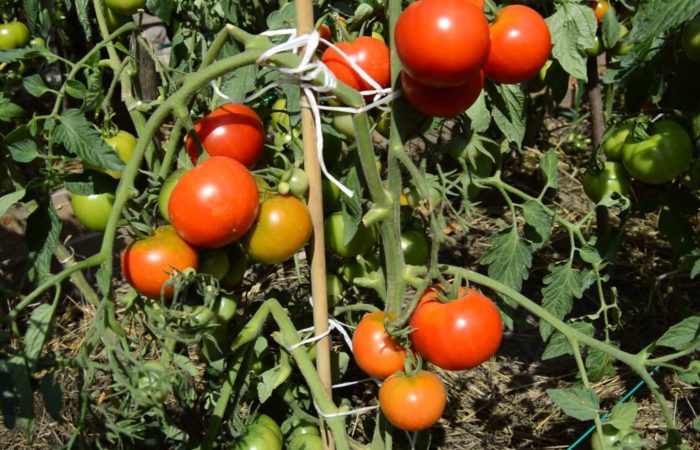
Several times during the period of growth and fruiting, it is necessary to fertilize with infusion of cow dung and mineral fertilizers. It is not necessary to tie tomatoes of the Volgograd variety. A strong trunk will bear the fruits.
During the growing season, plants need weeding, loosening, watering. It is good to mulch plantings with straw, hay. This will keep weeds out and retain moisture. From the second half of July, it is necessary to process tomatoes from late blight.
Tomatoes can be planted in open ground in late May – early June. The earth should warm up well. Planting rules are the same as in the greenhouse. Watering is done with warm, settled water.
It is better to plant seedlings in the beds in the evening. During the day, if it is very hot, it is desirable to create shading for the bushes. You can close them with Agrotex. It will protect you from bright sunlight.
Top dressing and processing from weeds and pests is carried out in the same way as when growing in a greenhouse. In the fall, remove and burn the bushes on which the tomatoes grew.
Features of the variety
Super-early ripening periods allow the cultivation of the variety “Volgogradsky 323” by a seedless method.
- In steady warm weather, make holes on the prepared ridges;
- The distance between the holes should be 30-40 cm, as the plant is determinate;
- Pour the wells generously with warm water;
- Put 5-6 seeds in each planting hole, sprinkle with earth, water again;
- Cover the ridge with a film or other covering material.
After seed germination, leave the two strongest sprouts in the hole, remove the rest. During this period, air and harden the seedlings.
The seedless method helps to grow strong and healthy plants. Its only drawback is the delay in the ripening of tomatoes for two weeks. This method requires loosening, weeding, watering.
The variety does not need pinching, but each grower decides at his own discretion whether to do this or not:
- to increase the size of the fruit;
- to unload the plant and reduce the amount of ovary.
Diseases and pests
The descriptions of the variety indicate that it is disease resistant. But experienced vegetable growers know that tomatoes need special protection and prevention.
Among the common fungal diseases of the culture:
- phytosporosis;
- powdery mildew;
- verticillosis;
- cladosporiosis.
To prevent the occurrence of diseases, it is necessary to carry out the treatment with fungicides, for example, phytosporin, in time. This remedy will help against phytophthora at the initial stage. For further control, use chemical systemic preparations.
Prevent powdery mildew. To do this, spray the tomatoes with sodium humate (0,1%). Treat damaged bushes with biological products: Alirin-B, Gamair or fungicides: Topaz, Fundazol.
Modern varieties today are resistant to verticillium and cladosporiosis. Older varieties do not have such immunity. Fungal infections are in the ground, and tomato planting sites must be changed so as not to lose the crop. In this case, crop rotation is mandatory. If this is difficult due to the small area of uXNUMXbuXNUMXbthe garden, it is necessary to neutralize the soil.
Harvest use
Variety of tomato “Volgograd early ripening 323” multifunctional:
- vegetable can be consumed immediately from the garden;
- fruits are great for canning and pickling;
- the pulp is used to make juices, ketchups, pastes;
- tomatoes tolerate transportation well and can be grown commercially for sale.
Who once tried to grow tomatoes of this variety will no longer refuse it. Compact and low bushes, good yields, disease resistance – this is a small part of the positive feedback about the “Volgograd early 323”.
